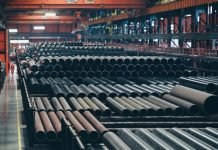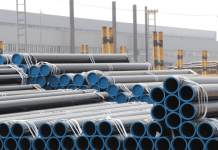Flame retardants have been central to developing fire safety through innovations in producing flame retardants and their use across various industries. These substances, whether incorporated into the material or applied as a surface coating, significantly minimize the possibilities of fire ignition or its development.
Therefore, it can be concluded that Intumescent flame retardant paint has a protection feature that makes it stand out among the above types.
This article explores the basic concepts of Flame Retardant paints and what is the main mechanism of flame retardants.
What is a Flame Retardant?
Flame retardants are materials that are applied to ward off fires from the beginning and even stop them from spreading if necessary. These chemicals can be ingrained into attached fabrics or used as surface-shining varnishes.
These retardants are good at putting out fire risks at different stages linked with materials that can easily catch fires because they can intercede with ignition activity. It can be employed in important things like electronics, building materials, and furniture furnishing.
What is Intumescent Flame Retardant Paint?
Intumescent flame retardant paint is a special type that swells up when exposed to heat and flame and forms a thick layer of char to shield the substrate from heat and flame. This type of paint is an essential part of passive fire protection systems and is applied in buildings, ships, offshore platforms, etc.
Unlike conventional flame retardants, which may just hide the fire behind a surface, intumescent paint provides a physical barrier that dramatically improves the fire standards of painted surfaces.
The Primary Mechanisms of Flame Retardants
Heat Absorption
Upon encountering fire, flame retardants initiate decomposition and volatilization, absorbing substantial heat. This activity significantly mitigates the surface temperature of the material it protects, thereby reducing the energy conducive to continuing combustion.
By utilizing this heat absorption mechanism, flame retardants crucially slow down or completely hinder the initiation of material ignition. This delay is invaluable, offering crucial moments for evacuation and implementing firefighting measures, thus mitigating potential harm and damage.
Barrier Formation
A paramount action mechanism of intumescent flame retardant paint is its capacity to form a protective barrier. When subjected to high temperatures, the paint undergoes expansion and solidifies into a dense, charred layer.
This newly formed barrier serves the dual purpose of insulating the material below from severe heat and blocking access to oxygen — essential for sustaining combustion. Consequently, this barrier function significantly decelerates or outright halts the advancement of flames, playing a pivotal role in fire containment efforts.
Chain Reaction Interruption
At the heart of combustion is a chemical reaction that liberates energy through heat and light. Flame retardants intervene by intercepting and neutralizing the free radicals produced amid combustion. These radicals are pivotal in perpetuating the combustion cycle.
Flame retardants interrupt this chain reaction, acting as a critical breakpoint, stalling or stopping the combustion process in its tracks. This interruption is crucial in preventing the escalation of fire and providing a significant buffer against the spread of flames.
Non-combustible Gas Asphyxiation
Among the diverse strategies employed by flame retardants is generating non-combustible gases, such as carbon dioxide and water vapor, through heat-induced decomposition. These gases effectively thin out the concentration of oxygen and flammable gases in the vicinity of a fire, addressing the oxygen component of the fire triangle.
By curtailing the available oxygen required for combustion, this asphyxiation technique aids in quelling the fire, impeding further spread and potential damage.
Safety And Protection When Handling Intumescent Fire Retardant Paints
When applying intumescent fire retardant paints, attention to safety and protection needs is crucial, as their chemical properties can be dangerous to human health if not handled properly.
- You should follow the manufacturer’s guidelines, which are the primary protection against possible risks.
- It is also important to prevent skin contact and inhalation of fumes and dust using the right PPE, such as gloves, eye protection, and masks.
- Enough fresh air should be circulated within the working environment to limit hazardous vapors.
- Store these paints far away from any source of heat or flame to prevent fires.
- Efficient management of spills is necessary to prevent slips and environmental harm, following specific recommended safety procedures.
Conclusion
Flame retardants, especially intumescent fire retardant paint, are useful in fire prevention and safety. Some of the ways through which they function have been explained above. All these mechanisms enhance the efficiency of flame retardants in preventing fires and reducing the fire’s spread rate and the extent of damage.
Intumescent flame retardant paint provides fire protection, safeguarding life and assets in a fire. Such technologies’ continued research and use remain crucial in our collective endeavors to ensure safer homes and workplaces.










